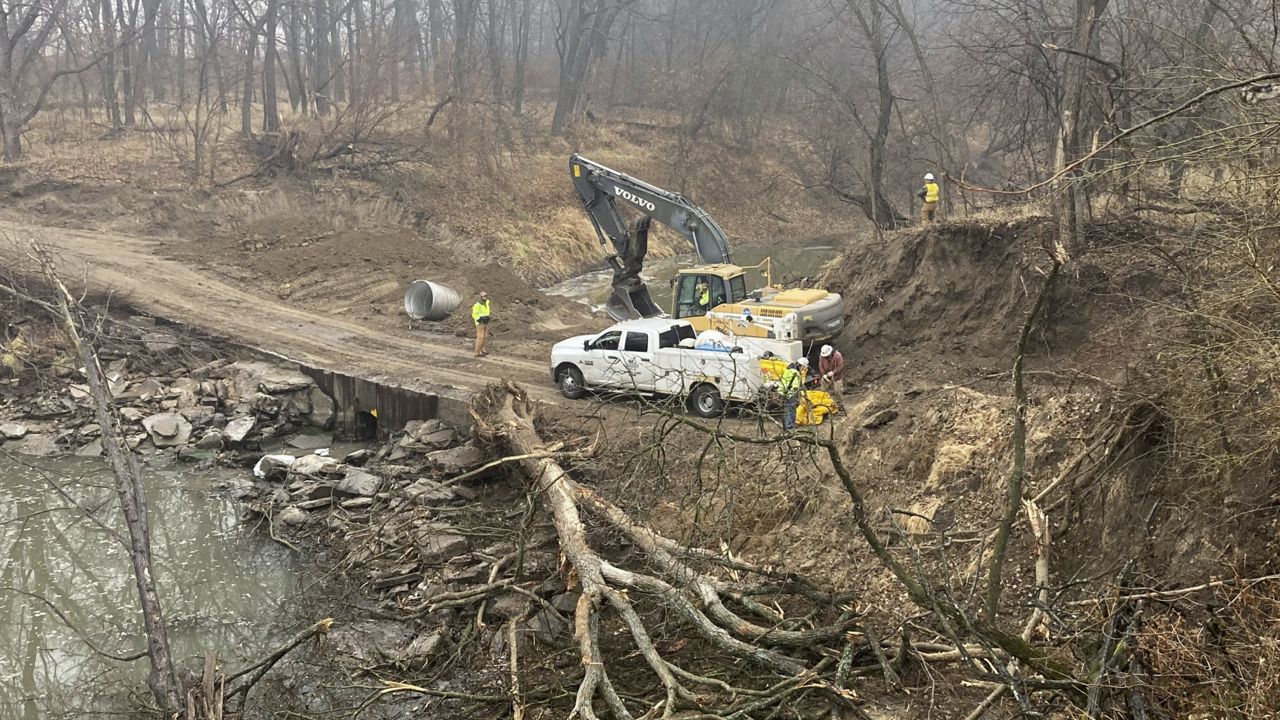Federal officials are monitoring an oil spill in Kansas that was first reported on Wednesday, according to Transportation Secretary Pete Buttigieg.
What You Need To Know
- An oil spill in a creek in northeastern Kansas this week is by far the biggest in the history of the Keystone pipeline, according to federal data
- Federal officials are monitoring an oil spill in Kansas that was first reported Wednesday, according to Transportation Secretary Pete Buttigieg
- Canada-based TC Energy on Wednesday said the oil spill in a creek in northeastern Kansas shut down its Keystone system following a drop in pipeline pressure
- The spill caused a brief surge in crude prices Thursday, and benchmark U.S. oil was up more modestly — about 1% — on Friday morning
The spill, which shut down part of the Keystone pipeline that carries oil from Canada to the Texas Gulf Coast, is the largest ever recorded in the history of the pipeline, according to federal data.
“We are monitoring & investigating the Keystone Pipeline leak first detected Weds night,” Buttigieg wrote on Twitter. “Our Pipeline and Hazardous Materials Safety Administration has issued a Corrective Action Order requiring a shutdown of the affected segment, analysis of the cause, and other safety measures.”
Canada-based TC Energy on Wednesday said the oil spill in a creek in northeastern Kansas shut down its Keystone system following a drop in pipeline pressure. It said oil spilled into a creek in Washington County, Kansas, about 150 miles northwest of Kansas City.
The company on Thursday estimated the spill’s size at about 14,000 barrels and said the affected pipeline segment had been “isolated” and the oil contained at the site with booms, or barriers. It did not say how the spill occurred.
Zack Pistora, a lobbyist for the Sierra Club in Kansas, noted the spill in his state was larger than all of the 22 previous spills combined on the Keystone pipeline, which began operations in 2010.
“This is going to be months, maybe even years before we get the full handle on this disaster and know the extent of the damage and get it all cleaned up,” he said.
In September 2013, a Tesoro Corp. pipeline in North Dakota ruptured and spilled 20,600 barrels, according to U.S. Department of Transportation data. The company, which worked to recover oil for years but only recovered a fraction of the spill, said that a lightning strike may have caused that break.
A more expensive spill happened in July 2010, when an Enbridge Inc. pipeline in Michigan ruptured and spilled more than 20,000 barrels into Talmadge Creek and the Kalamazoo River. Hundreds of homes and businesses were evacuated and federal regulators later ordered Enbridge to dredge the contaminated sediment from the river.
The Keystone pipeline’s previous largest spill came in 2017, when more than 6,500 barrels were spilled near Amherst, South Dakota, according to a U.S. Government Accountability Office report released last year. The second largest happened in 2019 near Edinburg, North Dakota, when it leaked 4,515 barrels.
The U.S. Environmental Protection Agency said there were no known effects yet on drinking water wells or the public in connection with this week’s spill and the oil didn’t move from the creek to larger waterways. No evacuations were ordered because the break occurred in rural pastureland, according to Randy Hubbard, the Washington County Emergency Management coordinator.
TC Energy said it had set up environmental monitoring at the site, including around-the-clock air quality monitoring.
“Our primary focus right now is the health and safety of onsite staff and personnel, the surrounding community, and mitigating risk to the environment,” a company statement said.
Junior Roop, the sexton of a cemetery near the spill site, said people could smell the oil in town.
“It was about like driving by a refinery,” he said.
Concerns that spills could pollute waterways spurred opposition to plans by TC Energy to build another crude oil pipeline in the Keystone system, the 1,200-mile Keystone XL, which would have cut across Montana, South Dakota and Nebraska. Critics also argued that using crude from western Canada’s oil sands would worsen climate change, and President Joe Biden’s cancellation of a U.S. permit for the project led the company to pull the plug last year.
A U.S. Energy Information Administration spokesperson said the Keystone pipeline moves about 600,000 barrels of oil per day from Canada to Cushing, Oklahoma, where it can connect to another pipeline to the Gulf Coast. That’s compared to the total of 3.5 million to 4 million barrels of Canadian oil imported into the U.S. every day.
The spill caused a brief surge in crude prices Thursday. Benchmark U.S. oil was up more modestly — about 1% — on Friday morning as fears of a supply disruption were overshadowed by bigger concerns about an economic downturn in the U.S. and other major countries that would reduce demand for oil.



